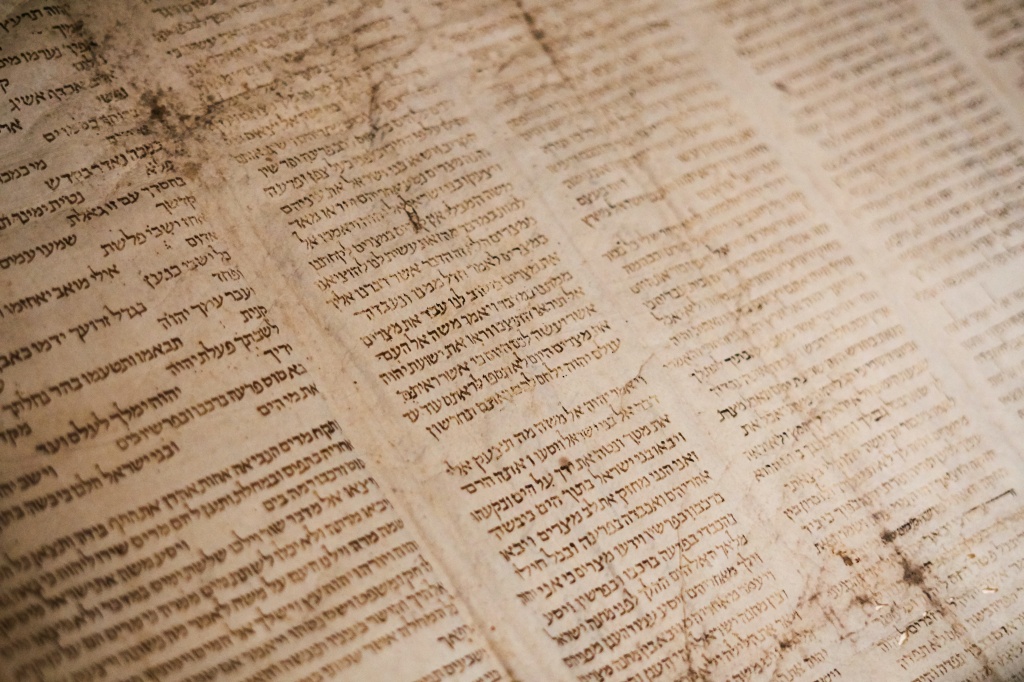
To show the reliability of the Old Testament, the approach is slightly different from that for the New Testament, given the distance between the time of the author and the earliest available copies.
A common misconception is that the text of the Old Testament was passed down over many generations, primarily orally, and therefore has been prone to a shift in message. In reality, the Jewish people placed a huge amount of importance in the careful copying of their scriptures by educated scribes, whose primary task was to make copies of Scripture.
One fact which gives us a high confidence in the accuracy of transmission of the Old Testament is the fact that when a manuscript was copied, scribes would perform a numerical calculation of occurrences of each letter on the page to ensure the text was preserved. Copies that failed to match the expected totals were destroyed and the process would start again.
While this copying process was used by the Masoretes between the 7th and 10th centuries AD, until recently these were the oldest manuscripts of the Old Testament available to us. The discovery of the Dead Sea Scrolls in 1948 however, put the earliest copies of the Old Testament back to 200 years before Jesus, confirming the accuracy of Scripture. Of the manuscripts found in the caves at Qumran, in particular a complete copy of the book of Isaiah shows the amazing accuracy of how the Old Testament text was copied. Alongside Isaiah are manuscripts and fragments from every Bible book other than Esther, with Deuteronomy and the Psalms particularly being well represented1.
Of course, for us as Christians, Jesus’ own view of the Old Testament text in the 1st Century affirms the Old Testament in his day was unchanged. Key verses to show your Muslim friend would be John 10:35, where Jesus stated that “Scripture cannot be broken”, Matthew 5:18, where Jesus affirms that the Law cannot be changed2, and Matthew 15:3, Mark 7:13 and Matthew 22:31, where Jesus identifies Scripture as the word and command of God. Jesus also quoted and referred back to Scripture on many occasions. See, for example, Matthew 21:16, Matthew 12:3, Luke 17:29, Luke 17:32, Luke 11:51, Mark 12:26 and John 6:31–51.
When Jesus talked with the two disciples on the road to Emmaus, he also affirmed that the whole of Scripture was uncorrupted when, “beginning with Moses and all the Prophets, he explained to them what was said in all the Scriptures concerning himself” (Luke 24:27). Jesus also makes a similar claim when talking with the Jewish leaders in John 5:39.
One verse that Muslim apologists often use to undermine confidence in the Old Testament is Jeremiah 8:8, which at first glance suggests a flawed process of the transmission of the Torah. This verse talks about the “lying pens of the scribes”; handling the Law of the Lord falsely.
It is important however to understand that a scribe’s role was not solely copying Scripture, but also interpreting Scripture and drafting legal documents like marriage, divorce, loans, inheritance, mortgages, the sale of land and the like.
In Jeremiah 26:4-5 God declares that the Law was “clearly set before” his people. How could God expect his people to walk according to his word if it had become corrupted and was not available to them in pristine form?
Also, the wider context of Scripture, especially the book of Daniel, shows that the Law was available in its original form beyond Jerusalem. Daniel who was exiled in Babylon had access to Jeremiah’s prophecy (see Daniel 9:1-3) and shows in his response in Daniel 9:11-13 that he must have had access to the text of the Law. Otherwise, how else would he have known in what ways Israel would have sinned against the Lord, even to the point where he is able to declare, “as it is written in the law of the Lord”?
Later too, we are told in Nehemiah 8:8 that Ezra and the Levites would read the book of the Law and explain it to those who had returned from exile, some 70 years after God’s people were taken into Babylon.
Of course, as stated in a previous approach (Before Muhammad, After Muhammad?), the Quran affirms the reliability of the Scriptures in Muhammad’s day many times, and so any Muslim claiming that the Bible has been corrupted has to deal with the contradiction this raises.
When it comes to the Old Testament, Jesus shows us that not only is it reliable, but also that it is all about him. Luke 24 is a good place to take your Muslim friend and show them that according to Jesus, his death and resurrection is firmly rooted in “the Law of Moses, the Prophets and the Psalms” (see Luke 24:44-49) and be ready to take your friends to Genesis 22:1-19 (the testing of Abraham), Exodus 12:1-13 (the Passover), Psalms 22:1-31 (an explicit foretelling of the cross in the Psalms) and Isaiah 53:1-12 (a prophecy of the Gospel in the Prophets), to show them what Jesus was referring to.